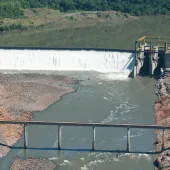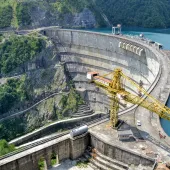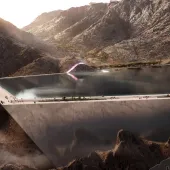World Bank approve U$1B for Dasu HPP
The World Bank have approved an additional U$1 billion (£786 million) in financing for the Dasu Hydropower Project (DHPP) in Upper Kohistan district, Khyber Pakhtunkhwa, Pakistan.
The U$1 billion (£786 million) is a second round of financing for the Dasu Hydropower Stage I (DHPP I) Project, and, according to the Bank will, “support the expansion of hydropower electricity supply, improve access to socio-economic services for local communities, and build the Water and Power Development Authority’s (WAPDA) capacity to prepare future hydropower projects,” it highlighted.
World Bank country director for Pakistan, Najy Benhassine, described the Dasu project site as “one of the best hydropower sites in the world and a game changer for the Pakistan energy sector,” asserting that “with a very small footprint, the DHP will contribute to ‘greening’ the energy sector and lowering the cost of electricity.”
Rikard Liden, the task team leader for the project, emphasized that DHP-I is an “essential project in Pakistan’s efforts to reverse its dependence on fossil fuels and reach 60% renewable energy by 2031.”
He added, “The second additional financing will facilitate the expansion of electricity supply and potentially save Pakistan an estimated U$1.8 billion (£1.4 billion) annually by replacing imported fuels and offset around 5 million tons of carbon dioxide [and] the annual economic return of DHP-I is estimated to be around 28%.”
When complete, the Dasu HPP will have an installed capacity of 4,320–5,400 megawatts (MW) and is being built in stages. DHP-I has a capacity of 2,160MW and will generate 12,225 gigawatt hours (GWh) per year of low-cost renewable energy. The DHP-II will add 9,260–11,400GWh per year from the same dam.
Design details
The Dasu Hydropower Project is located 7km upstream of the Dasu Bridge near Dasu town in Kohistan District, Khyber Pakhtunkhwa, Pakistan and involves constructing a RCC (Roller-Compacted Concrete) Gravity Dam on the Indus River.
The RCC dam will have an overall height of 242m and a crest length of 570m. It will integrate eight spillway gates, nine low-level outlets, two circular flushing tunnels, two circular headrace tunnels, four D-shaped tailrace tunnels, and two coffer dams. Twelve Francis turbine generators will be installed at the plant site.
The reservoir created by the dam will be 74km long and 365m wide, with a storage capacity of 1,410 million cubic metres.
The concrete mix used in RCC dams has a low water content, making it dry and similar to soil in consistency. This mix is spread in thin layers and compacted using rollers, similar to asphalt in road construction.
The dam is built up in horizontal layers, each layer being compacted before the next is placed. This method allows for continuous construction without the need for formwork between layers.
Like traditional gravity dams, RCC gravity dams rely on their weight to resist the forces exerted by the water in the reservoir. The mass of the dam presses down on the foundation, providing stability against sliding and overturning.
The cross-section of an RCC gravity dam typically has a triangular shape, broad at the base and tapering towards the top, optimizing the use of materials to resist water pressure efficiently.
The construction process is significantly faster than conventional methods due to the continuous placement and compaction of concrete. Reduced formwork, less cement usage, and reduced labour costs contribute to overall savings. The dense, compacted concrete has good durability and resistance to weathering and chemical attacks.
Dam construction
The construction works of the main dam began in mid-2017. Preliminary project activities for phase one primarily include the relocation of 62km of the Karakorum highway to a higher elevation, the construction of 81km of right bank access roads, and diversion tunnel inlets. It also includes the construction of a 36km-long, 132kV transmission line from the Dubair Khwar hydropower plant to Dasu.
Other ancillary activities include the construction of access roads, bridges, tunnels, offices and accommodation facilities, and the development of resettlement sites.
The construction of phase two of the relocation of KKH began in May 2022. The construction of two diversion tunnels was completed resulting in the diversion of the Indus River for the project in February 2023. Stage one of the concrete starter dam was completed in June 2023.




